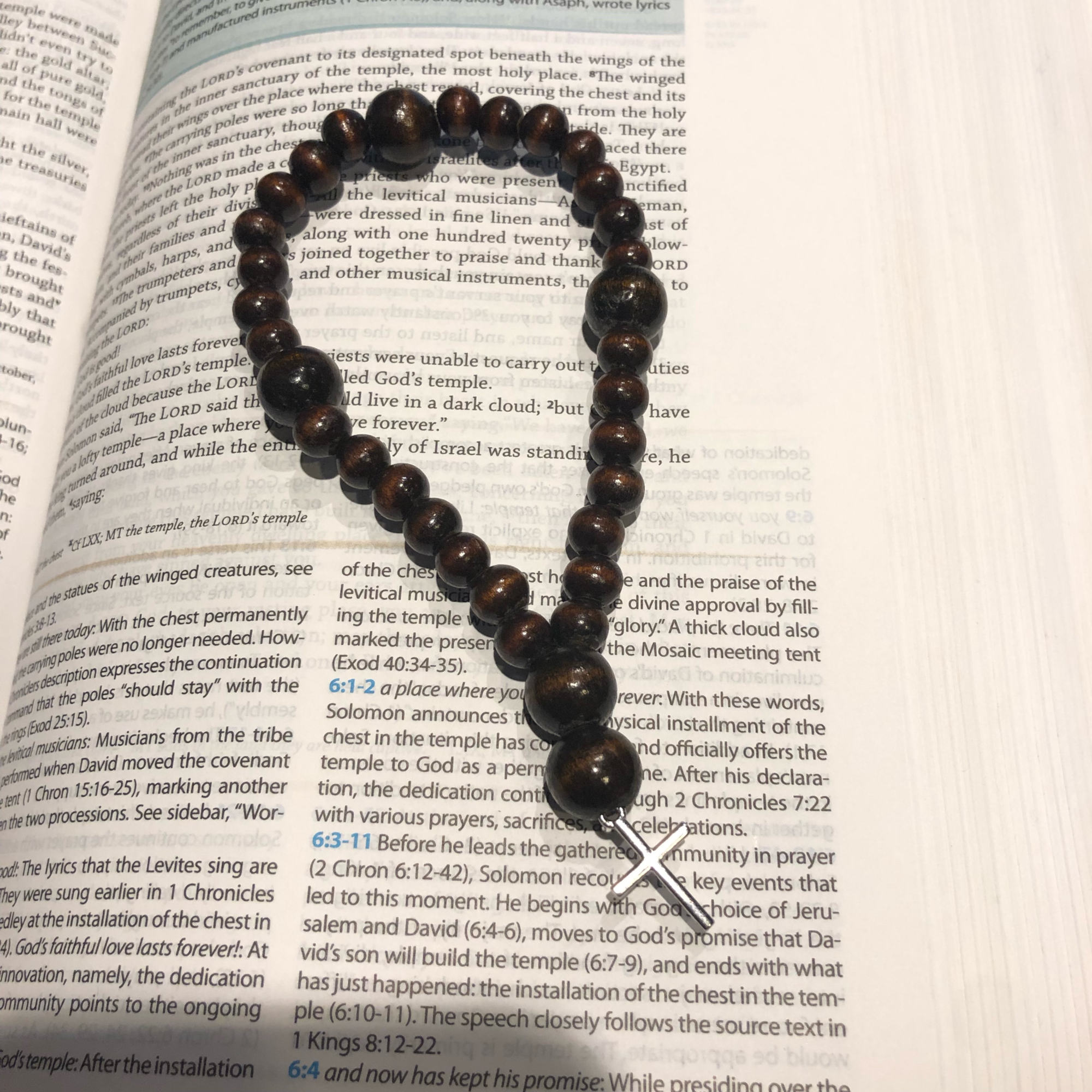Prayer Beads
Statue of St. Vincent DePaul outside DePaul Center in the Loop
Saturday, January 5, 2019
The first time Reuben made reference to prayer beads in conversation, I was completely oblivious. It was during my field studies orientation, on our introductory prayer walk. He was talking about how in his own prayers he’s not always known how to pray for the Loop, and he had gestured towards his own set of prayer beads on his wrist.
And although I hadn’t noticed the reference Reuben was actually trying to make in that moment—mostly because I hadn’t been looking at him at the time—and I hadn’t much of an idea of what prayer beads actually were yet, I could relate to the sentiment that Reuben had expressed about not knowing how to pray.
As I mentioned in my first post, that first prayer walk made me aware just how undisciplined my prayer life and attentiveness to conversation with God had become.
What I didn’t add in that first post is that it wasn’t particularly shocking to me that I’d gotten that way. As I later mentioned to Reuben, this past semester at college and even the summer before had been some the most spiritually undisciplined times in my life.
And this is definitely a reflection of the fact that the past eighteen months also have been filled with the most questions, the most uncertainties, and the most doubt that I’ve experienced in regards to God and my faith.
This isn’t to say that I’ve been totally negligent of God or my faith in this time. On the contrary, I think I’ve actually needed this time in my life to wrestle with God and what I truly believe.
Although if I’m also being honest, there have been plenty of moments when I’ve been overwhelmed because I haven’t necessarily come to satisfying conclusions for what I believe, especially about God. So there were some of those times in which I settled into more inactivity than wrestling.
However, these moments of doubt have also helped me to come to grips with the fact that faith does not need to be grounded in having things proved to a complete certainty. The reality is there’s not much any of us can be certain about, not in regards to proved existence anyway. And I think doubt can be a refiner of faith, because sometimes even when you don’t know for sure you can still choose to believe and trust God anyway.
Now about prayer beads. They are a tool for prayer, similar to the rosary or Orthodox prayer rope, except they’re not designed around a specific written prayer or branch of Christianity. Instead, the purpose of prayer beads is to help focus on remaining in prayer. It’s not about saying or doing the right things with the beads themselves. But the beads can serve as a tangible point to direct us back towards God.

My homemade prayer beads
The basic idea is that you would start praying by holding the cross (see figure 1), followed by the invitatory bead (“inviting” you into the circle), then round each of the four inner groups of beads as many times as you like until you finally leave the circle. The four big beads are called “cruciform beads,” for the points of a cross shape they make. And the sets of seven smaller beads are called “weeks.” This makes for a total of 33 beads, which is meant to represent the number of years Jesus of Nazareth spent on earth.
When I told Reuben about how difficult praying had become for me, he offered to help me make my own set of beads. And even in just one week, praying with beads has helped me rekindle an attitude of prayer, which is something that has been hard for a few reasons: my lacking a disciplined prayer life, yes, but I’ve also been distracted often by determing how I expect God to respond to my prayers and which words and phrases I should use.
Through this new-to-me practice of prayer beads, I’ve appreciated the pattern and structure they give. Rather than having to search for the right words, I can meditate and be mindful of what I’m saying to God and what God has spoken to humanity.
And in some of those moments when doubt creeps into my life, going through prayers with the beads has helped me posture myself towards God in humility—to remember the hope upon which I trust and to remember all that I am trusting God to be, even when it doesn’t seem evident.
And when in other times of prayer, I might have been more inclined to become distracted, the beads offer a means of staying focused on the task of prayer. When my mind might be prone to wander, the beads are a tether I can touch, see, and hold that calls my mind back.
As I said, prayer beads are really adaptable. But, here’s one of the prayers that Reuben shared with me. It comes from John Wesley’s Covenant Service, which also happens to be a common celebration around New Year’s for a lot of Wesleyan-Holiness churches and other Christians around the world:
A Covenant Prayer
adapted from the prayers of John Wesley (1703-1791) for use with Christian prayer beads
✠ the cross | ◎ the invitatory bead | ❖ each cruciform bead | ⍿ 1–7 that bead of each week
✠ The covenant now made on earth, let it be ratified in heaven.
◎ And now, glorious and blessed God: Father, Son, and Holy Spirit, you are mine and I am yours. So be it.
❖ I freely and wholeheartedly yield all things to your pleasure and disposal.
⍿ 1 I am no longer my own but yours.
⍿ 2 Put me to what you will, rank me with whom you will;
⍿ 3 put me to doing, put me to suffering;
⍿ 4 let me be employed for you, or laid aside for you,
⍿ 5 exalted for you, or brought low for you;
⍿ 6 let me be full, let me be empty,
⍿ 7 let me have all things, let me have nothing:
(Repeat ❖—7 a total of four times, returning finally to the invitatory bead)
◎ And now, glorious and blessed God: Father, Son, and Holy Spirit, you are mine and I am yours. So be it.
✠ And the covenant now made on earth, let it be ratified in heaven.
